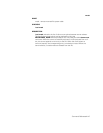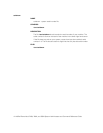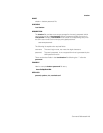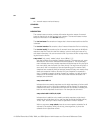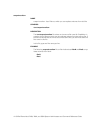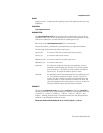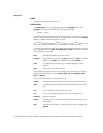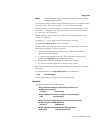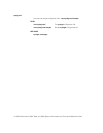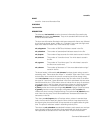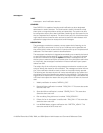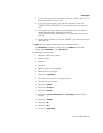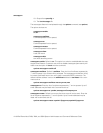
Command ReferenceA-155
debug Debug messages used for diagnostic purposes. These messages
are suppressed by default.
If a received message matches the specified
facility
and is of the specified
level
(or a higher
level
), the action specified in the
action
field will be taken.
Multiple
selectors
may be specified for a single
action
by separating them with
semicolon (;) characters. It is important to note, however, that each
selector
can modify the ones preceding it.
Multiple
facilities
may be specified for a single
level
by separating them with
comma (,) characters.
An asterisk (*) can be used to specify all
facilities
or all
levels
.
The special
level
none disables a particular
facility
.
The
action
field of each line specifies the action to be taken when the
selector
field selects a message. There are four forms:
A pathname (beginning with a leading slash). Selected messages are
appended to the specified file.
A hostname (preceded by an at (@) sign). Selected messages are for-
warded to the syslogd daemon on the named host.
/dev/console. Selected messages are written to the console.
An asterisk. Selected messages are written to the console.
Blank lines and lines whose first non-blank character is a pound (#) character
are ignored.
It is recommended that all /etc/syslog.conf files include the line
*.info /etc/messages
so that all messages are logged to the /etc/messages file.
EXAMPLES
A configuration file might appear as follows:
# Log all kernel messages, and anything of level err or
# higher to the console.
*.err;kern.* /dev/console
# Log anything of level info or higher to /etc/messages.
*.info /etc/messages
# Also log the messages that go to the console to a remote
# loghost system called adminhost.
*.err;kern.* @adminhost
# The /etc/secure.message file has restricted access.
auth.notice /etc/secure.message
syslog.conf



